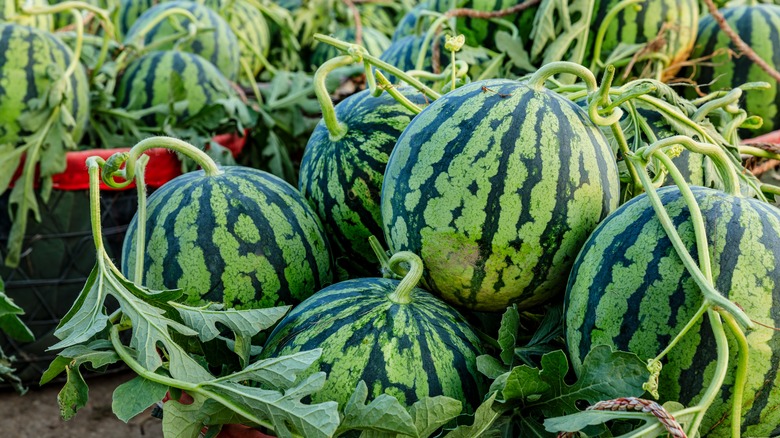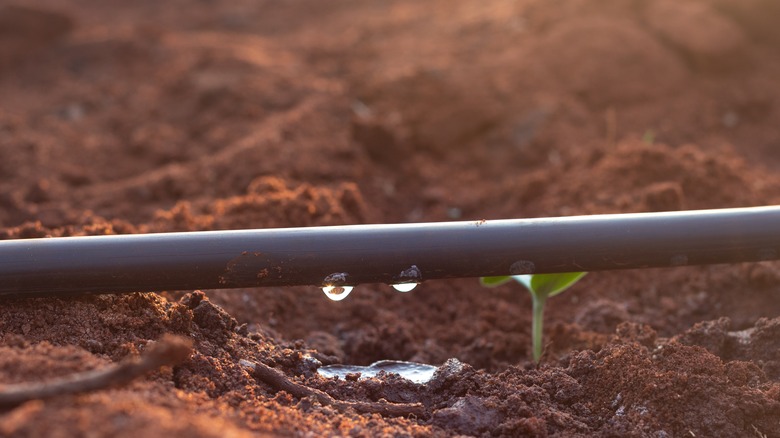Essential Watering Tips For A Thriving & Sweet Watermelon Garden
A thriving watermelon garden is a well-watered one. The aptly named fruit will soak up as much as it can during its growing phase until the fruit swells to become 92% water. Watermelons are also a heat-loving plant. The warm season crop gets sweeter if grown in hotter temperatures, ideally somewhere between 65 and 95 degrees Fahrenheit.
For those in cooler climates, that means you want to plant your watermelons in the hottest, sunniest part of your yard. For those in hot climates, you'll have more flexibility. However, you might want to provide some shade or protection from the heat if you consistently get temperatures above 95 degrees Fahrenheit.
With such a thirsty plant that wants to grow in a hot, sunny area, it's important to water it correctly. You don't want it to dry out, but you also don't want it to get waterlogged or covered in fungal growth. Watering incorrectly or at the wrong time can also affect the sweetness. The best watering techniques that will ensure you grow the sweetest watermelons possible is to water heavily during the early phase of the fruit growth and cut back in the last two weeks of ripening.
Water early and deeply for sweet watermelons
When the fruit first sets and starts growing, gardeners need to water deeply but less frequently. Without enough water in this phase, the watermelon's growth might be stunted and the fruit might fall off the vine. To prevent that, saturate the top six inches or so of soil about twice a week. This encourages the roots to grow deeper to find all the water they need to produce plump, juicy fruit.
Depending on the size of your watermelon garden, this might take a while. The first time you water, periodically dig into the soil with a small shovel to check how well-saturated it is deeper down. Once it feels moist six inches below the surface, note the time so you know how long it took to saturate the soil properly.
With how much water they need during this growth phase, it's important to avoid watering from above. Watering from above will wet the leaves and stems, making them vulnerable to fungi and disease. Instead, use a drip irrigation system that saturates the soil without splashing back onto the leaves and steps. You can also water your raised garden bed using an olla that's buried in the soil.
When to cut back on watering
About two weeks before the fruit is ready to harvest, you'll reduce the amount of water to just the bare minimum needed to prevent the plant from dying. There are a few signs you can check for to know when your watermelons are ripe and entering that final growing phase. As the watermelon matures, the tendrils closest to the fruit stem start to turn brown and dry while the leaves closest to the fruit will begin to yellow. On the fruit itself, the surface will start to feel rough and the vibrant green color will start to dull to a pale green or yellow.
When you start to see those early signs of ripeness, you can gradually scale back your watering. Throughout the growing season, take some time before each watering to look closely at your watermelon garden. That way, you'll notice these changes as soon as they start and can cut back on watering at the right time. In this final growing phase, let the soil dry out between watering. You can wait until the top four inches or so of soil feel dry before watering again.
Getting this time is important because, while watermelons need tons of water during the main growing phase, too much water in those last two weeks can cause problems. The excess water can end up diluting the sugars and potentially even cause the fruit to split.


